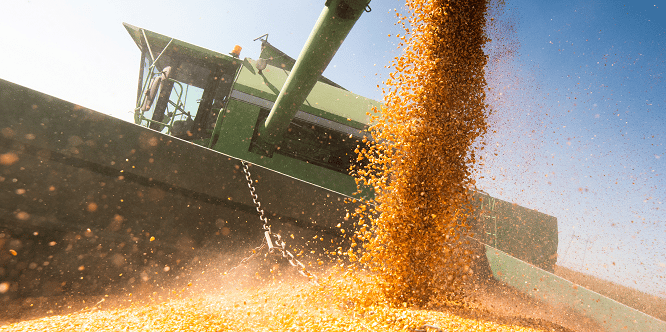TAKEAWAY: In recent years, interventions, including occupational testing and safety education and training, have significantly reduced the number of fatalities and injuries in the agricultural industry. But there is more work to be done. Farming remains dangerous work.
Jump Ahead
Nationwide, according to the Canadian Agricultural Injury Reporting, an average of 117 people died annually in Canadian farm accidents from 1990 to 2000. That average dropped to 85 by 2012, when 60 people died on Canadian farms.
Because most farm fatalities do not involve worker’s compensation, data can be difficult to obtain. However, in Ontario 6 farm-related fatal accidents in 2020 and 3 in 2019. That’s down from 9 in 2018, 10 in 2017, and far below the 29 on average per year between 1990 and 2008.
But there is more work to be done. Farming remains dangerous work.
The Risk of Occupational Illness and Injury in Agriculture
Research suggests that agricultural workers are at higher risk of developing occupational diseases due to higher exposures to different chemicals and pesticides and are more prone to occupational accidents. According to John Shutske, Professor and Director of the University of Wisconsin’s Center for Agricultural Safety and Health, “those who work on farms and ranches experience a fatality rate that is about seven times higher than the average of all workers in the U.S. – even when you include those who work in manufacturing, mining, construction, and service industries.” There are similar numbers in Canada.
According to experts, what works is a combination of safety education and occupational testing. While legislation is essential, it really has little effect on the agricultural industry without substantial enforcement. Conversely, though, one survey of 404 research studies on the agricultural sector concluded that monitoring, surveillance, and screening are practical prevention tools. Together education and occupational testing can lead to better health and safety outcomes for all workers, including agricultural workers.
Agriculture Safety Education and Training
Many studies have identified the critical importance of educational interventions for farmers and farm workers in reducing farm-induced disease and injuries and improving their general health, well-being, and safety.
Education efforts aimed at building knowledge, competency, and skills in safe agricultural practices have a notable effect on farmers and their families, communities, and employees. This effect was confirmed in a recent extensive survey of studies on North American agriculture workers. Safety education is vital for migrant workers who may also face language and other barriers that can adversely affect their safety.
Migrant farmworkers are of particular concern as they often face higher rates of work-related illnesses, injuries and fatalities than local workers. Targeted training interventions can reduce the risks for these workers and help remove the language and cultural barriers that adversely affect their safety.

iNTELLECT E-Learning | Powered By SureHire
SureHire offers a range of online self-study courses to help your workers perform their jobs safely. Browse through our course offerings and register online today!
Hearing Conservation Baseline Testing and Periodic Audiometric Testing
Machinery, equipment and even pesticides contribute to hearing loss in the agricultural industry. Several recent studies have concluded that periodic audiometric testing should be an integral component of any hearing conservation program in the agricultural sector. Starting with baseline testing allows workers and health professionals to identify issues early and accurately gauge levels of hearing loss. Following up with regular audiometric testing can also encourage the use of preventative measures, including personal protective equipment (PPE). However, testing alone is rarely enough to shift long-held practices that may put hearing at risk. For example, even when PPE was placed close to agricultural work areas, workers rarely used them.
However, when workers received appropriate education and training alongside regular audiometric testing, researchers have seen even more robust results. In fact, numerous studies have confirmed that farmers who receive education about hearing protection are far more likely to use it.

Request a Quote for Audiometric Testing Today!
SureHire offers both in-facility and onsite/mobile testing options to help employers manager their hearing conservation program. Learn more about our Audiometric testing services and PPE products!
Lung Health Testing and Monitoring
Researchers have identified similar results with lung health testing and monitoring in the agricultural industry. For example, studies have demonstrated a significantly increased risk of respiratory health concerns among farmers and farm workers. Engineering controls can help eliminate some of these hazards but not all. Agricultural workers face several severe ongoing exposures to respiratory risks, particularly from the organic clouds of dust and pesticides commonly used in these workplaces.
Farmer’s Lung and other chronic respiratory diseases, including cancer, are just some of the risks that can be dramatically reduced with the use of appropriate interventions, including occupational testing and education. For example, studies have found that interventions that included lung function testing helped promote positive outcomes in terms of wearing appropriate PPE and safe practices.
Changes in pesticide usage and the regulations surrounding that use emphasises the need for regular respiratory safety training and fit testing for agricultural workers. The Canadian Centre for Health and Safety in Agriculture highly recommends both the use of respirators and regular fit testing to help in the prevention of chemical and toxin exposure and to help prevent the spread of zoonotic diseases through the air.
Again, testing combined with education has proven to be most effective at shifting behaviours and encouraging safe practices.

Contact Us About Lung Health Testing & Monitoring!
SureHire offers both in-facility and onsite/mobile testing options to help employers manager their hearing conservation program. Learn more about our Audiometric testing services and PPE products!

